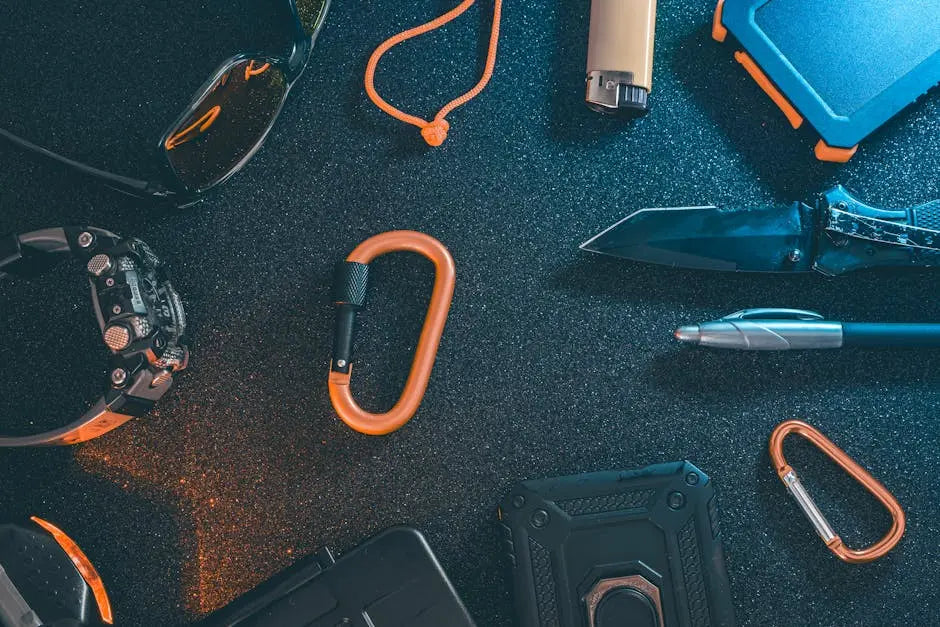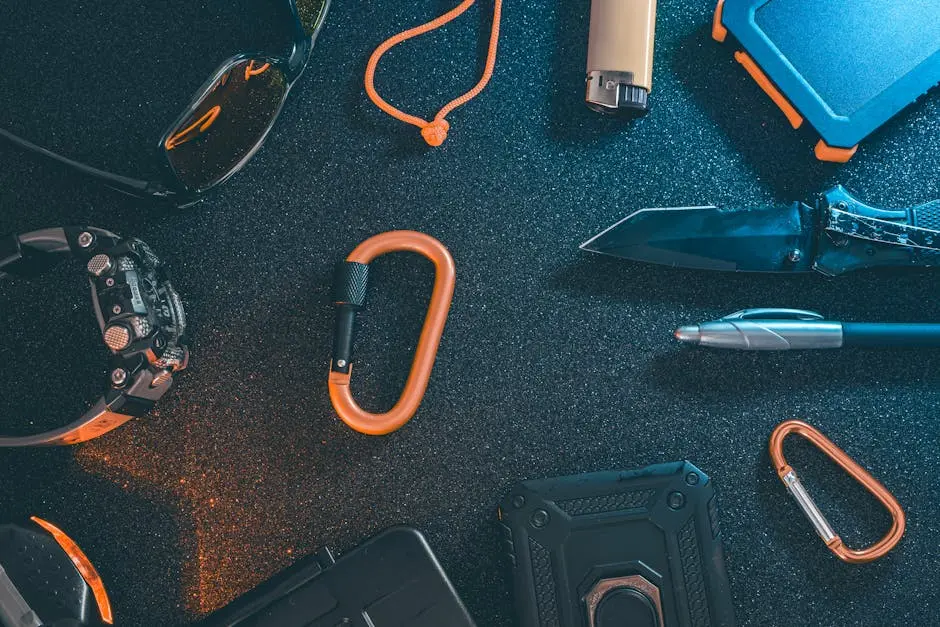
Choosing the Right Knife for Your Outdoor Adventures
Posted by Shopify API on
When it comes to outdoor adventures, having the right tools can make all the difference. Among the must-have tools is an (Out-The-Front) knife. These versatile knives offer convenience and efficiency, but choosing the right one can be overwhelming given the various options available. This guide will help you understand the key features to look for in an knife and determine which one is best suited for your outdoor needs.
Understanding Knives
knives are specialized blades that open and close through an opening at the front of the handle, providing quick and easy access during outdoor activities. They are known for their reliability and efficiency, making them a popular choice among adventurers.
What sets OTF knives apart from their folding counterparts is the mechanism that allows the blade to extend and retract in a straight line from the front. This unique feature not only allows for rapid deployment but also provides a sleek and compact design. It’s this kind of design that makes OTF knives particularly useful in high-pressure situations where every second counts.
Another aspect to appreciate about OTF knives is their ease of use. Whether you are setting up camp, preparing food, or facing an unexpected challenge, having a knife that you can operate with one hand can be incredibly advantageous. The straightforward mechanism means less fumbling, which can be especially valuable when you’re out in nature and need to act quickly and efficiently.
Key Features to Consider
There are several features to take into account when choosing an OTF knife. These include the type of blade material, handle design, opening mechanism, and safety features. Each of these elements plays a crucial role in the knife’s performance and usability.
Let’s start with blade material. A high-quality blade material will determine how well the knife can handle various tasks and how long it will stay sharp. Stainless steel is a popular choice due to its resistance to rust and corrosion, making it ideal for a variety of outdoor conditions. On the other hand, carbon steel is known for maintaining a sharp edge longer but can be more susceptible to rust. By understanding the pros and cons of each material, you can select the one that best suits your needs.
Handle design is another pivotal factor. No matter how sharp a blade is, if the handle is uncomfortable, the overall user experience will suffer. A well-designed handle provides a secure grip and minimizes hand fatigue. Materials like G-10, aluminum, and titanium are commonly used because they offer a combination of strength, lightweight, and durability. Additionally, some handles come with textured patterns or ergonomic shapes to further enhance grip and comfort.
Blade Material and Design
The blade material significantly impacts the knife’s durability and sharpness. Common materials include stainless steel, carbon steel, and various alloys. Additionally, the blade design (e.g., double-edged or single-edged) can affect the knife’s functionality for different tasks.
Stainless steel blades are widely favored for their resistance to rust and minimal maintenance. This makes them a reliable choice for adventurers who might use their knives in a variety of environments, from damp forests to salty coastal areas. However, while they are less prone to corrosion, they might require more frequent sharpening compared to high-carbon steel blades.
On the other hand, carbon steel blades are beloved for their exceptional edge retention. They stay sharp longer, which makes them ideal for more rigorous tasks. The trade-off, however, is that they require more diligent care to prevent rust and corrosion, which may be a consideration if you’re venturing into wetter climates. Choosing the right blade material often boils down to balancing these needs based on your activities.
Handle Design and Ergonomics
A comfortable and well-designed handle is essential for extended use. Consider the materials (such as aluminum, G-10, or titanium) and the ergonomics of the handle. A good grip can enhance control and reduce fatigue during prolonged use.
One of the central aspects of handle design is material selection. Aluminum handles are both lightweight and sturdy, presenting a durable option without adding unnecessary bulk. This makes aluminum a favorite choice for those who prioritize portability. G-10, a high-pressure fiberglass laminate, is another excellent material known for its high strength, low moisture absorption, and great grip, even in wet conditions. Titanium, while often more expensive, provides the ultimate durability and corrosion resistance, making it an ideal option for extreme environments.
Ergonomics play an equally important role in handle design. Features like finger grooves, curvature, and texturing can vastly improve comfort and grip. When the handle is shaped to fit your hand naturally, it becomes an extension of your arm, allowing for precise and controlled movements. Handles that lack ergonomic considerations can lead to discomfort or even injury during prolonged use. Therefore, trying out different handle styles, if possible, can help you find the most comfortable fit for your hand.
Opening Mechanism and Safety
The opening mechanism is a distinctive feature of OTF knives. Some are automatic, requiring a simple button push, while others are manual. Safety features, such as locks, are crucial to prevent accidental deployment and ensure safe handling.
Automatic OTF knives offer the advantage of speed and convenience. With just a push of a button, the blade springs into action, ready for immediate use. This can be incredibly valuable in urgent situations where you need to react quickly. However, automatic mechanisms typically require more maintenance to ensure they function smoothly. Regular cleaning and lubrication can help maintain the knife’s performance over time.
Manual OTF knives, while not as swift to deploy, give the user more control over the blade’s action. This might be preferred for tasks requiring precision or when you want to minimize the risk of accidental deployment. Some models feature a dual-action mechanism, where the same button is used to both deploy and retract the blade, which adds to their practicality and user-friendliness.
Legal Considerations
OTF knives are subject to varying legal restrictions depending on your location. It’s important to be aware of your local laws regarding the ownership, carry, and use of these knives to avoid legal issues.
In many places, the laws surrounding OTF knives can be quite complex. Some regions may prohibit the sale, possession, or carrying of automatic knives altogether, while others may have specific stipulations on blade length or the type of opening mechanism allowed. It’s essential to perform thorough research or consult local authorities to ensure you are in compliance with local regulations. Not only will this help you avoid legal trouble, but it will also give you peace of mind while using your knife in the field.
One useful strategy is to look for state-specific or country-specific resources that outline the legal status of OTF knives. These resources can provide detailed insights and updates on any changes in legislation. Being well-informed can also aid in making an educated decision when purchasing an OTF knife, ensuring that your new tool is both functional and legally compliant.
Choosing Based on Intended Use
Your choice of OTF knife should be guided by how you intend to use it. Whether you need it for camping, hiking, or everyday carry, understanding your specific needs will help you select a knife that provides the best performance for those activities.
For instance, if you’re an avid camper, you might prioritize a versatile blade that can handle tasks ranging from food prep to cutting rope. In this case, a stainless steel blade with a versatile edge might be an excellent choice. Conversely, if you’re looking for a knife for more specialized tasks, such as hunting or fishing, a blade with superior edge retention, like high-carbon steel, might be more appropriate.
For those who enjoy hiking, a lightweight knife with a durable handle might be a priority. After all, every ounce matters when you’re trekking through miles of trails. Additionally, considering the knife’s ease of access and deployment is critical, as you may need to use it quickly in various scenarios. Features like a convenient pocket clip or a sheath can be bonus points for hikers.
Making the Right Choice for Your Outdoor Needs
Selecting the right OTF knife for your outdoor adventures doesn’t have to be daunting. By considering the blade material, handle design, opening mechanism, legality, and intended use, you can find a perfect match for your needs. With the right OTF knife in hand, you’ll be well-prepared for whatever nature throws your way.


